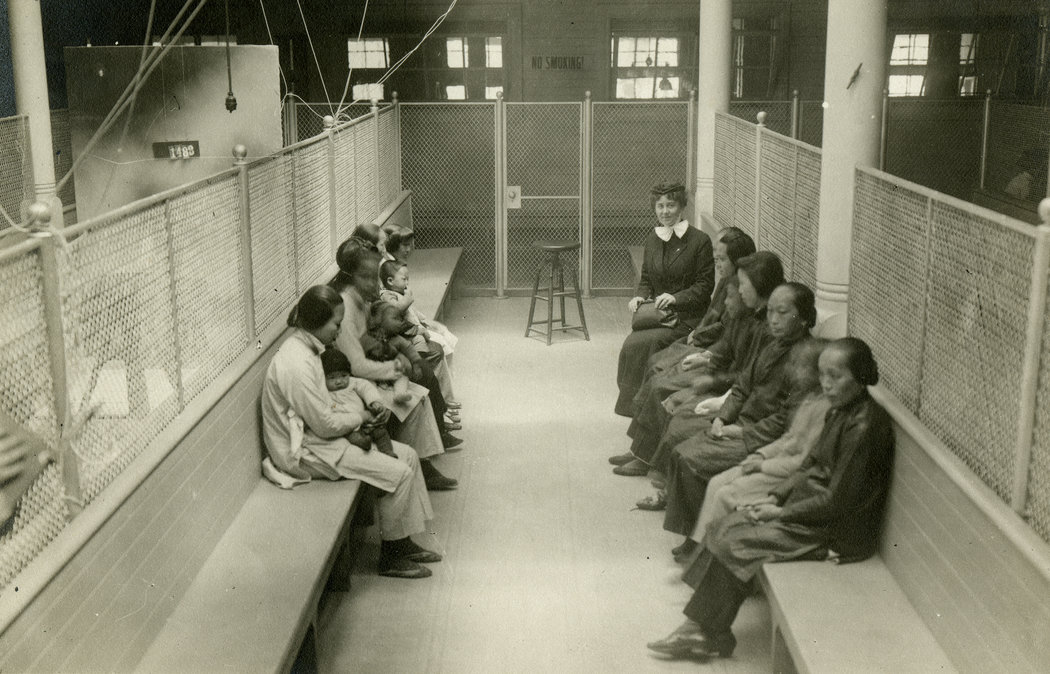TA的每日心情 | 喜歡
昨天 03:23 |
|---|
簽到天數: 869 天 [LV.10]昇任副理
管理員
  
- 積分
- 3702
  
|
馬上註冊,結交更多好友,享用更多功能,讓你輕鬆玩轉社區。
您需要 登錄 才可以下載或查看,沒有賬號?立即註冊
x

排華法案 (1882)
《排華法案》於 1882 年 5 月 6 日獲得通過。
1882年春,國會通過了《排華法案》,並由切斯特·阿瑟總統簽署。該法案絕對禁止中國勞工移民美國十年。聯邦法律首次禁止少數族裔工作團體進入,理由是其危害某些地區的良好秩序。
《排華法案》要求少數尋求進入美國的非勞工(例如外交官員)必須獲得中國政府的證明,證明他們有資格移民。但這個群體發現證明自己的地位越來越困難,因為 1882 年法案將勞工定義為「熟練和非熟練……以及受僱於採礦業的華人」。因此,根據1882年的法律,很少有中國人可以進入該國。
1882年的排華法案也對已經入境的華人提出了新的要求。如果他們離開美國,他們必須獲得重新入境的證明。此外,國會拒絕州和聯邦法院向中國居民外國人授予公民身份的權利,儘管這些法院仍然可以將他們驅逐出境。
1892 年排除法案到期後,國會以《吉爾里法案》的形式延長了 10 年。這項延期於 1902 年永久化,增加了限制,要求每個中國居民進行登記並獲得居住證明。如果沒有證明,他們將面臨被驅逐出境的危險。
《吉爾里法案》對二十世紀的華人移民進行了監管。隨著第一次世界大戰後移民的增加,國會採取了新的監管手段:與國籍有關的配額和要求。國會將注意力轉向限制來自更廣泛國家的移民,包括南歐和東歐以及整個亞洲的許多國家。 1924 年的《移民法案》(也稱為《約翰遜-里德法案》和《民族起源法案》)將1890 年的人口普查確定為確定有多少移民將被接納的基礎——每個國籍的限制是已居住在該國籍的2%。
1943年,當中國在第二次世界大戰期間成為同盟國成員時,國會廢除了所有排斥法案。然而,配額仍然存在,每年的中國移民限額為 105 人。外國出生的華人也獲得了尋求入籍的權利。
所謂的國籍制度經過各種修改,一直持續到國會通過1965 年《移民法》。超過20,000 人。技能和政治庇護的需要決定了錄取。
1990 年的《移民法》對合法移民進行了自 1965 年以來最全面的變革。該法案進一步規定,這些類別中任何單一外國的簽證不得超過可用簽證總數的百分之七。
2011-2012年,國會譴責排華法案,並申明維護所有人公民權利和憲法保護的承諾:參議院於2011年一致通過參議院第201號決議; 2012年眾議院一致通過第683號決議。
(原文)
Chinese Exclusion Act (1882)
The Chinese Exclusion Act was approved on May 6, 1882. It was the first significant law restricting immigration into the United States.
In the spring of 1882, the Chinese Exclusion Act was passed by Congress and signed by President Chester A. Arthur. This act provided an absolute 10-year ban on Chinese laborers immigrating to the United States. For the first time, federal law proscribed entry of an ethnic working group on the premise that it endangered the good order of certain localities.
The Chinese Exclusion Act required the few non-laborers who sought entry to the United States (such as diplomatic officers) to obtain certification from the Chinese government that they were qualified to immigrate. But this group found it increasingly difficult to prove their status because the 1882 act defined laborers as "skilled and unskilled...and Chinese employed in mining." Thus very few Chinese could enter the country under the 1882 law.
The 1882 exclusion act also placed new requirements on Chinese who had already entered the country. If they left the United States, they had to obtain certifications to re-enter. Congress, moreover, refused state and federal courts the right to grant citizenship to Chinese resident aliens, although these courts could still deport them.
When the exclusion act expired in 1892, Congress extended it for 10 years in the form of the Geary Act. This extension, made permanent in 1902, added restrictions by requiring each Chinese resident to register and obtain a certificate of residence. Without a certificate, they faced deportation.
The Geary Act regulated Chinese immigration into the 20th century. With increased immigration following World War I, Congress adopted new means for regulation: quotas and requirements pertaining to national origin. Congress shifted its attention to limiting immigration from a wider variety of countries, including many in Southern and Eastern Europe and all of Asia. The Immigration Act of 1924 (also known as the Johnson-Reed Act and the National Origins Act) established the 1890 census as the basis for determining how many immigrants would be admitted — the limit for each nationality was 2 percent of that nationality already living in the United States and recorded by the census takers.
In 1943, when China was a member of the Allied Nations during World War II, Congress repealed all the exclusion acts. However, quotas remained, leaving a yearly limit of 105 Chinese immigrants. Foreign-born Chinese also won the right to seek naturalization.
The so-called national origin system, with various modifications, lasted until Congress passed the Immigration Act of 1965. Effective July 1, 1968, a limit of 170,000 immigrants from outside the Western Hemisphere could enter the United States, with a maximum of 20,000 from any one country. Skill and the need for political asylum determined admission.
The Immigration Act of 1990 provided the most comprehensive change in legal immigration since 1965. The act established a "flexible" worldwide cap on family-based, employment-based, and diversity immigrant visas. The act further provides that visas for any single foreign state in these categories may not exceed seven percent of the total available.
In 2011-2012, Congress condemned the Chinese Exclusion Act and affirmed a commitment to preserve civil rights and constitutional protections for all people: the Senate unanimously passed Senate Resolution 201 in 2011; and the House of Representatives unanimously passed House Resolution 683 in 2012.

加州一處移民中心內的中國婦女和兒童
|
評分
-
查看全部評分
|